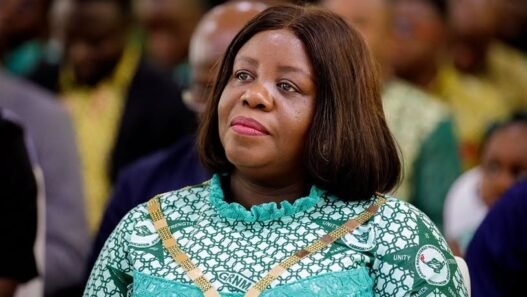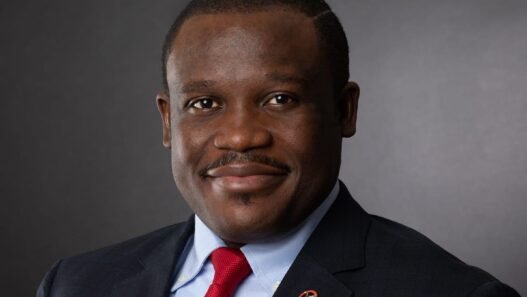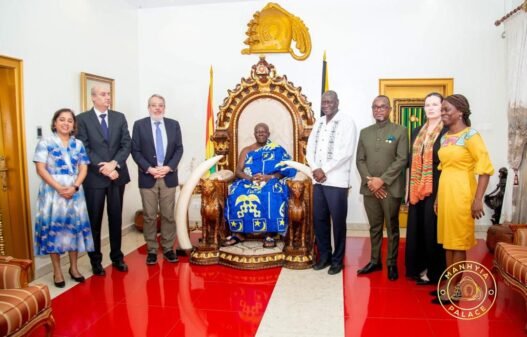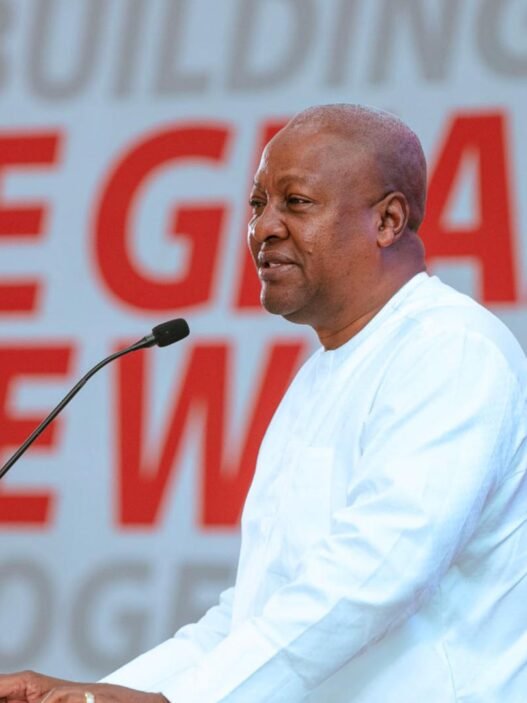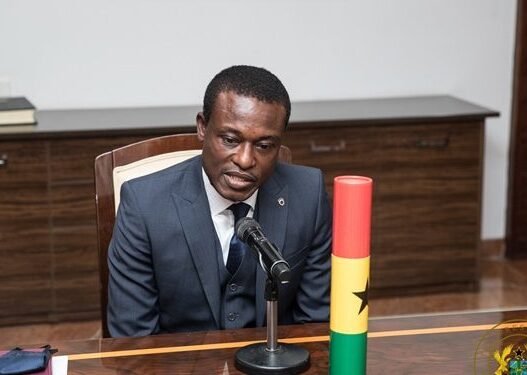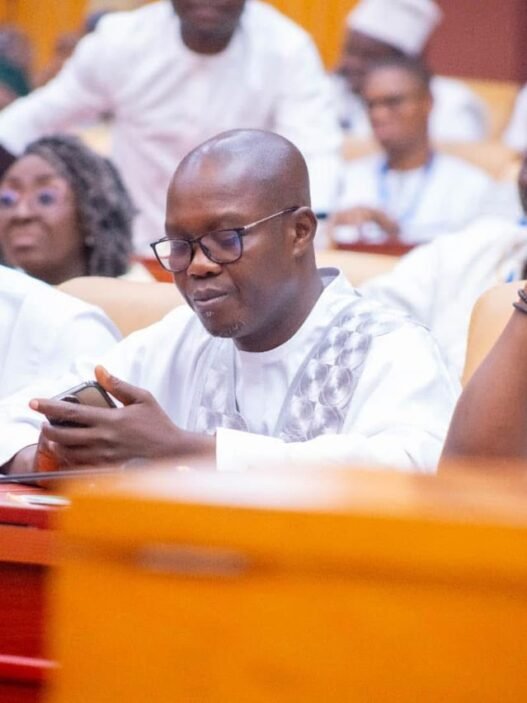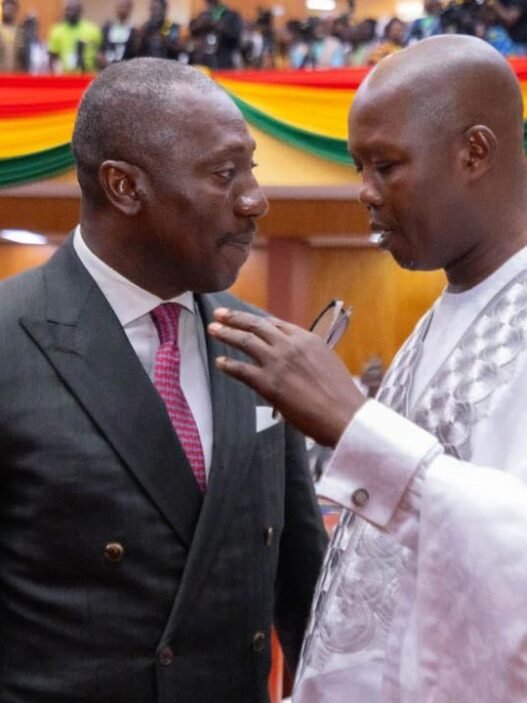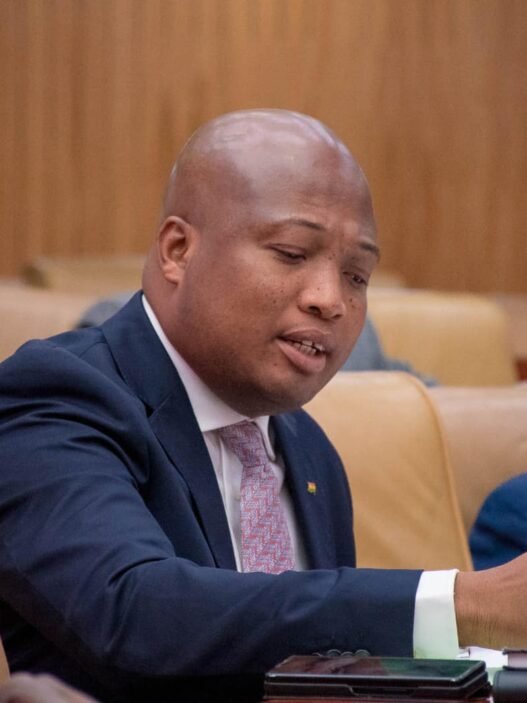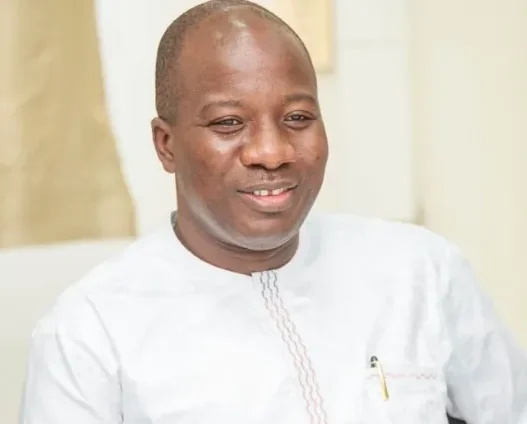On January 10, 2025, the Asantehene, Otumfuo Osei Tutu II, met with the World Bank’s Vice President for Western and Central Africa, His Excellency Ousmane Diagana, to discuss the delayed Kumasi Urban Mobility and Accessibility Project (KUMAP). The meeting, held at the Manhyia Palace in Kumasi, also saw the participation of key World Bank officials and regional stakeholders, including Robert Taliercio (Country Director), Michelle Keane (Operations Manager), and other specialists in urban development and transport.
From the Ashanti Regional Coordinating Council, Michael Owusu Amoako (Chief Director), Beatrice Kwarteng (Regional Economic Planning Officer), and Francis Gambrah (Regional DUR Director) were present. This high-level dialogue sought to resolve delays in the KUMAP project, which aims to address Kumasi’s growing urban mobility challenges.
The Asantehene and some top officials of the World Bank’s at the Manhyia Palace. Photo Credit: Manhyia Palace/Facebook



Amidst these discussions, the Asantehene made significant remarks about development in the Ashanti Region, expressing a desire to rely less on politicians and more on direct partnerships with global institutions like the World Bank. His comments, though inspiring for many Ashantis, also ignite complex discussions about governance, constitutional boundaries, and regional dynamics in Ghana.
The Asantehene’s Role in Ghana’s Governance Framework
Otumfuo Osei Tutu II’s influential role as the Asantehene gives him a platform to advocate for development. However, it is crucial to remember that Ghana operates under a republican constitution, which clearly outlines the relationship between traditional authorities and the state. The Constitution of Ghana recognizes chiefs as custodians of tradition and culture, with key responsibilities in land administration and dispute resolution.
While his call for a “social contract” to drive development is laudable, it raises questions about its implications within Ghana’s constitutional framework. Traditional rulers are not sovereign entities, and their authority is subject to the state’s governance structure. By declaring his unwillingness to rely on politicians, the Asantehene risks being perceived as undermining the very system that guarantees his position under the Chieftaincy Act. This perception could lead to accusations of separatism, particularly as the Ashanti Region does not have the political and institutional hallmarks of a nation-state, such as a central bank, currency, or international recognition.
The Concept of a “Social Contract” and Its Ambiguities
The Asantehene’s proposition of a “social contract” introduces a powerful narrative about local empowerment. However, the terms of such a contract remain ambiguous. Social contracts typically exist between a state and its citizens, with reciprocal obligations. In the absence of sovereignty, any agreement spearheaded by the Asantehene would need to align with national policies.
The proposal also suggests a pivot toward bypassing the government to work directly with international institutions. While this approach may seem pragmatic given bureaucratic delays, it risks creating parallel structures of governance. Such a scenario could challenge the unity of the state and undermine the collaborative frameworks necessary for sustainable national development.
Selective Reverence for Chiefs in Ghana
The elevated stature of the Asantehene is a historical and cultural reality in Ghana. However, the government’s practice of prioritizing the Asantehene over other chiefs and Houses of Chiefs raises concerns about equity in governance. While the Asantehene’s influence as a cultural and regional leader is undeniable, Ghana’s governance structure emphasizes equality among traditional authorities.
Government delegations and diplomats often make a beeline to the Manhyia Palace, a practice that fosters perceptions of favoritism. This selective reverence risks alienating other regions and undermining national unity. Development must be seen as a collective effort, with equal attention given to all traditional areas to avoid perceptions of regionalism.
The Ashanti Region’s Development Agenda
The Asantehene’s focus on pressing development issues such as road networks, transit systems, and employment creation underscores his commitment to the well-being of Ashantis. However, achieving these goals requires collaboration with political leaders who control national resources and policy frameworks. The Kumasi Urban Mobility and Accessibility Project (KUMAP) is a prime example.
The World Bank’s commitment to KUMAP, reaffirmed during the January 10 meeting, highlights the importance of multi-stakeholder collaboration. The project, which includes the Bus Rapid Transit (BRT) system, aims to address Kumasi’s growing transportation challenges, fueled by rapid urbanization and population growth. By integrating sustainable and efficient transport systems, KUMAP seeks to enhance urban mobility in Kumasi and its surrounding areas, including Ejisu, Kwadaso, and Oforikrom.
The presence of both World Bank officials and Ashanti Regional Coordinating Council representatives at the Manhyia Palace emphasizes the interconnectedness of traditional authority, international institutions, and government structures in addressing regional development challenges.
Reconciling Traditional Leadership with National Governance
The Asantehene’s statement reflects a genuine desire to expedite development in the Ashanti Region. However, his dismissal of politicians risks alienating critical stakeholders in Ghana’s governance structure. Chiefs, while powerful advocates for their communities, operate within a constitutional framework that necessitates collaboration with the government.
The path forward requires balanced partnerships. Chiefs should leverage their cultural and regional influence to complement government efforts, not replace them. Similarly, the government must work to ensure equitable attention to all traditional areas, fostering a sense of inclusion and national unity.
Conclusion
Otumfuo Osei Tutu II’s leadership in advocating for development in the Ashanti Region is commendable. His vision for addressing pressing challenges such as urban mobility and youth employment aligns with the aspirations of many Ghanaians. However, his approach must align with constitutional boundaries to avoid misunderstandings about his role in governance.
The January 10 meeting with the World Bank’s Vice President underscores the potential of partnerships to drive regional development. By fostering collaboration between traditional authorities, the government, and international institutions, Ghana can achieve sustainable growth that benefits all regions and reinforces its national cohesion.
As Ghana navigates its path toward development, the Asantehene’s call for progress serves as a reminder of the critical balance between tradition, modern governance, and constitutional order.






